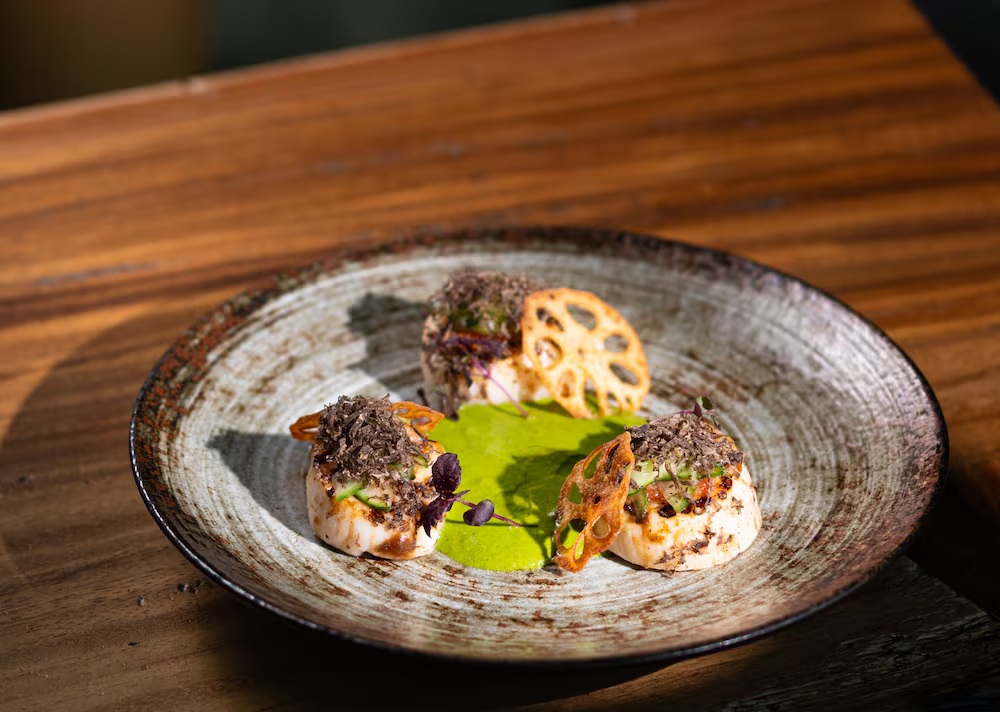Monitoring Desk
Much of the cooking in this kitchen is about dinner, or lunch perhaps, but it can also be about small delights, too – good things to eat before the main meal of the day or just for the fun of it.
On the table this week was a fragrant paste of green olives and preserved artichokes that we spread on slices cut from a herb loaf, and another of minted ricotta for eating with fruit. The latter was simple – the white, fresh cheese stirred through with chopped mint and parsley leaves and – for crunch – finely chopped, ice-crisp radishes. Something to pile into the open mouths of ripe, casually torn figs or a crisp new season’s pear.
I value recipes like these for their adaptability, but also for the fact that they are a step away from the everyday task of making something to eat. The addictive olive paste – I could eat it at any time of day – could also make a dressing for freshly cooked pappardelle or for spreading on to grilled lamb cutlets. The ricotta is also a stuffing for flatbread (I warm the slippers of dough on the griddle) or for dressing a salad of chicory, walnuts and crisp new season’s Worcester apples. You could use it as a spread, too, on rye bread, perhaps with curls of smoked trout.
I made a light main dish this week, too: a casual lunch of thinly sliced courgettes marinated in lemon and olive oil, capers and parsley, then tossed with tiny orange mussels fresh from the steamer. There isn’t really a mussel season as such, but my thoughts turn towards plump, sweet shellfish the moment summer is over. Prawns would have been a good fit here as well, or perhaps some clams or even rings of squid, their edges blackened from a few minutes over a scorching grill.
Mussels, courgettes and parsley
Leaving the thinnest shavings of courgette in the dressing – olive oil, lemon and capers – for half an hour will soften them. A little longer will not hurt. You could, if you wish, cook them instead. Pile the thin slices of courgette into a steamer or colander and place over a pan of boiling water for 5-8 minutes until tender. Alternatively, toss them in a pan with a splash of olive oil over a moderate heat until the courgettes are tender and translucent. Serves 2
courgettes 600g
parsley leaves a good handful
olive oil 3 tbsp
capers 1 tbsp
mussels 500g
white vermouth a splash
Wipe the courgettes, then use a vegetable peeler to take long shavings from them and drop them into a mixing bowl. Discard the seedy central core. Roughly chop the parsley leaves – you can leave them whole if they are small and tender – then add to the courgettes with the olive oil and capers. Season lightly with salt and pepper and set aside somewhere cool for a good half hour.
Scrub the mussels, remove any beards and check for broken or cracked shells. Discard any mussels that fail to close immediately when tapped on the side of the sink.
Put the mussels in a large deep pan over a moderate heat, pour in the vermouth and cover tightly with a lid. Cook for 2 or 3 minutes until the mussel shells have opened. Remove immediately from the heat, then pull the mussels from their shells. Drop the mussels into the courgettes and toss the ingredients gently together.
Serve on plates or in shallow bowls.
Figs with green olive artichoke tapenade

I have taken to keeping a jar of this aromatic, pale green paste in the fridge, stored in a screw-top jar. I use plain, stoned green olives here, but it is also worth trying with olives that have been marinated in lemon oil. (You can often find them at the deli counter.) The artichoke and olive tapenade will keep for several days, tightly covered, a little longer still if the surface is covered with olive oil. It makes a good dressing for pasta, too, though most of mine is spread in generous waves on to warm oatcakes or chewy sourdough baguettes. Enough for 4
For the tapenade:
artichokes 200g, bottled in oil
green olives 50g, stoned
parsley leaves 7g
lemon ½
olive oil 80ml
For the ricotta:
ricotta 200g
radishes 5
parsley leaves 5g
mint leaves 5g
To serve:
olive or rosemary bread or sourdough 8 small slices
figs 12 medium to large, ripe
Using a food processor, reduce the artichokes, green olives and parsley leaves to a coarse paste, adding the lemon juice and olive oil, and a grinding of black pepper as you go. Using a rubber spatula, transfer to a small serving bowl and refrigerate.
Put the ricotta in a mixing bowl. Finely chop the radishes, parsley leaves and mint and stir into the ricotta, slowly and carefully, with a little salt and black pepper. Set aside in the fridge until needed.
Toast the olive or rosemary bread (sourdough is good if you can’t find herb or olive breads), then serve with the olive paste and radish ricotta. Tear the figs open and place on a platter or board.
Courtesy: theguardian








